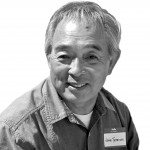There’s a bit of a buzz going around the Asian American community about the controversial model minority myth, and yes, the JACL is once again in the middle of something of a hullabaloo.
Amy Chau (she of the “Tiger Mom” fame) recently published “Triple Package,” in which she apparently describes Asian Americans as a model minority, either ignorant of, or completely ignoring, how Asian Americans rejected that characterization decades ago as insensitive and racist by its implied indictment of the African American community.
Indiana University history professor Ellen Wu, on the “History News Network” blog (http://hnn.us/article/154439), takes Chau to task for embracing the model minority stereotype while at the same time excoriates the JACL for numerous actions in its checkered past, not least of which is the organization’s role in perpetuating the darker side of the model minority myth, commenting on Bill Hosokawa’s “Nisei: The Quiet Americans” in the process:
JACL directors shrewdly spun the narrative to speak to the increasingly urgent “Negro Problem.” Nowhere was this most [sic] apparent than in journalist Bill Hosokawa’s book Nisei: The Quiet Americans (1969), a general history of Japanese America commissioned by the league as part of JARP. Nisei cast Japanese Americans as model minorities, citing famous examples (World Trade Center architect Minoru Yamasaki, Hawai’i Congresswoman Patsy Mink) and asking how such feats of assimilation had been achieved in the face of racial discrimination. “Looking on the extremes of apathy and militancy among Negroes and Hispanos [sic], some Nisei from the comfort of their upper middle class homes have been led to ask: ‘Why can’t they pull themselves up by their own bootstraps the way we did?’” observed Hosokawa.
Clearly, there’s no defending the sentiment expressed in this comment from Hosokawa’s book. Of course the negative comparison was unnecessary and hurtful; and it’s true the JACL played a part in perpetuating the negative aspects of the model minority myth. It’s right there in Hosokawa’s book. But it’s useful to put it in some context.
This was 1969, five years after the historic Civil Rights Act when the nation’s focus was on African Americans and their struggles for equality. President Lyndon Johnson had pushed through his Great Society programs, which allocated billions of dollars to black communities in an effort to correct over 150 years of injustice.
In the shadow of all of this, Japanese Americans had quietly struggled to rebuild their lives after the devastation of their WWII imprisonment and had achieved a remarkable degree of success in doing so. There was a sense of pride among Japanese Americans that they had overcome so much hatred and prejudice to build a secure future for their children and re-establish their communities.
The darker side of expressing that pride compared the community with black America without truly understanding that the imprisonment of African Americans in poverty and racism was far more devastating than theirs in concentration camps.
Japanese Americans felt a need to extol their own achievements, especially since they felt so alone in their struggles to get a foothold in American society after all they had endured during and after the war, which was still a strong memory in 1969. The war with Japan may have ended almost 20 years earlier, but the memories and prejudicial judgment of mainstream America still lingered.
In rebuilding their lives, Japanese Americans were on their own, and they knew it. It was gaman(ITAL) at its ultimate. Just take the crap others give you and endure and persevere and don’t complain. Be Japanese, show them you’re better than that.
In that climate, it was not surprising that many in the Japanese American community felt the need to extol their accomplishments with pride: In the face of all the hostility against them, they were determined to achieve respect for their accomplishments. The sad part was that in doing so, some failed to understand the difference between their struggle and those of black America. Prisoner is not the same as slave.
It should be noted that the characterization of Japanese Americans as a model minority was soon applied to describe Chinese Americans, and over time as new generations of other ethnic Asians arrived on our shores and proved their extraordinary ability to adopt and excel in American society, the model minority description could still be found despite our collective protestations of its racist insensitivity to other communities of color.
At some point, we have all been swallowed up by the model minority myth, and how we come out of this conservative white construct depends on whether we buy into it with self-adulation or see it for what it is. In my experience working with Asian American communities around the country, I’ve learned that we’ve all made mistakes and we all have crosses to bear, and sometimes the best we can do is teach each other from the mistakes of our collective experiences.
I spent most of my adult working life in the political arena and fighting for Asian American civil rights, and much of that time was with the JACL — first as redress director and several years later as the national director. In both positions, I frequently found myself having to deal with the criticisms and controversies that surround the JACL. As a leader of the organization, I always felt the obligation to challenge its critics when appropriate as well as to speak out honestly about its fallibilities, an interesting road to travel if you’re willing to take that journey.
I’m no longer a leader and am a rank-and-file member like all of you. I leave it to the current JACL leadership to address the many issues Wu raises because they’re legitimate issues and serious concerns.
It’s time to fish or cut bait.
John Tateishi is a former JACL national director.
Originally published on March 7, 2014




